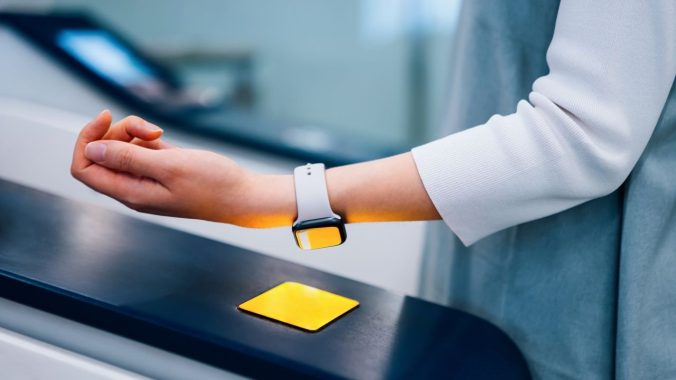The COVID-19 pandemic has pushed digital payments into a new era as businesses around the world were forced to switch quickly from in-store to online. As more and more consumers started to shop online, embedding the payments experience in customer journeys and managing payments infrastructure have become extremely important to businesses in virtually every industry.
Merchants innovate
The pandemic has forced businesses to embrace new ways of attracting and retaining customers in the face of fierce competition and tight margins. As a result, we have seen many non-financial services providers embed the payments experience in the customer journey to offer more appealing, convenient, and personalised services.
Titan Pay in India is a great example. Titan, a traditional watch-making company, is offering the country’s first wearable payment solution in collaboration with SBI Bank. This new contactless payment solution will redefine the shopping experience for Indian consumers by enabling them to tap and pay instantly with their watches and avoid any human contact in the payments process.
Similarly, Starbucks has recently enhanced the Starbucks app, a well-known reward and loyalty programme, to improve its customer experience. In the face of rising consumer demands for more options to pay and earn rewards, Starbucks has introduced a variety of payment methods. These include Apple Pay, Google Pay, PayPal, and other digital wallets, as well as debit, credit, and loyalty cards.
Walgreens, the US-based retail pharmacy chain, has recently announced its plan to offer customer-focused health and wellbeing payment initiatives through a new bank account offering in partnership with MasterCard, Meta Bank and InComm Payments. The offering is expected to enrich the customer experience and the ways the company addresses customers’ financial needs.
These are some of the examples of businesses recognizing payments as an integral part of the buying experience and not as an isolated back-office function. As digital transactions are expected to increase steadily around the globe, businesses from all industries can benefit from reimagining customer journeys to embed flexible payment options or credit facilities directly into their offerings.

Fueling payments growth with new value propositions: Accenture research highlights how payments leaders outgrow the competition in the face of disruption and evolving customer needs.
LEARN MOREConsumers respond
The adoption of e-commerce and digital transactions has also accelerated as more consumers turn to digital channels for purchasing essentials. Consumers who previously preferred an in-store experience or cash over digital payments are now getting confident with digital wallets, contactless payments, and open banking payments. According to a PaySafe research study, 54 percent of UK consumers have used new forms of payments since the outbreak of COVID-19.
The adoption of contactless payments and digital wallets has also grown steadily during the pandemic. Almost a third of online purchases in the UK were made using mobile wallets like Apple Pay and Google Pay. Similar trends are observed across Europe and the US.
Open banking payment, which is one of the newest ways of making an instant payment directly from a consumer’s bank account, has increased significantly in the UK since the start of the pandemic. More than 40 percent of UK consumers have used open banking payments during the crisis. TrueLayer, one of the leading fintechs offering open banking payments initiation capabilities, recorded a massive 832 percent increase in open banking payments during the lockdown.
Buy now, pay later (BNPL) payments methods have also gained popularity among young and new-to-credit customers. Approximately seven million UK consumers now use Klarna’s BNPL solution for online clothes shopping. Afterpay, another BNPL start-up from Australia, has attracted one million new users during the lockdown. The BNPL model minimizes up-front payment and allows consumers to pay with their own money instead of turning to expensive loans. These payments options return control of cashflow to the consumer and put them at the heart of the payments.
While some of this digital uptake is likely driven by necessity rather than enthusiasm, many of these changes in consumer behavior will persist past the pandemic—and evolve further.
What does it mean for payments players?
This is a time of rapid change and disruption in payments. We recommend all organizations take the following five steps to respond to and seize emerging opportunities:
- Assess how the payments needs and behaviors of your customers have changed over the course of the pandemic. Reimagine your customer journeys to offer seamless, frictionless payments experiences.
- Consider payments accessibility and inclusion for new-to-digital or underserved customer segments.
- Enhance payments infrastructure and security to handle increased volumes and prepare for the future.
- Ensure compliance with relevant regulations such as PSD2 and SCA.
- Use data to improve customer journeys and offer better financial experiences.
If you’d like to discuss your organization’s digital payments journey, I would love to hear from you. You can reach me on LinkedIn.











